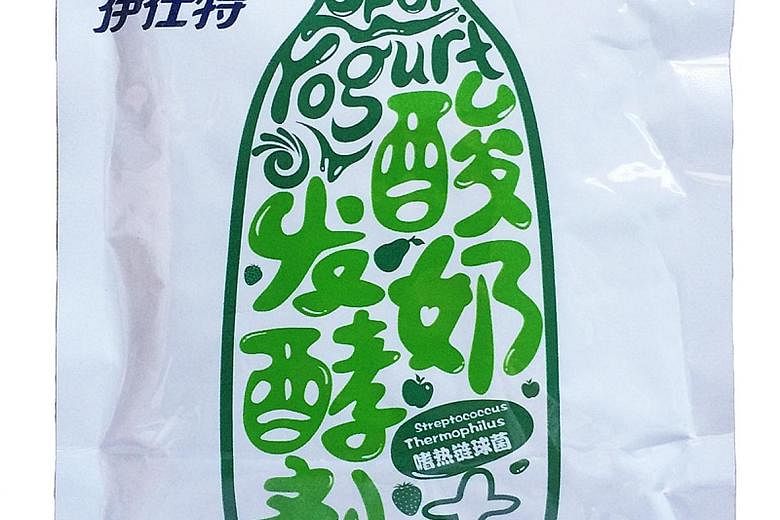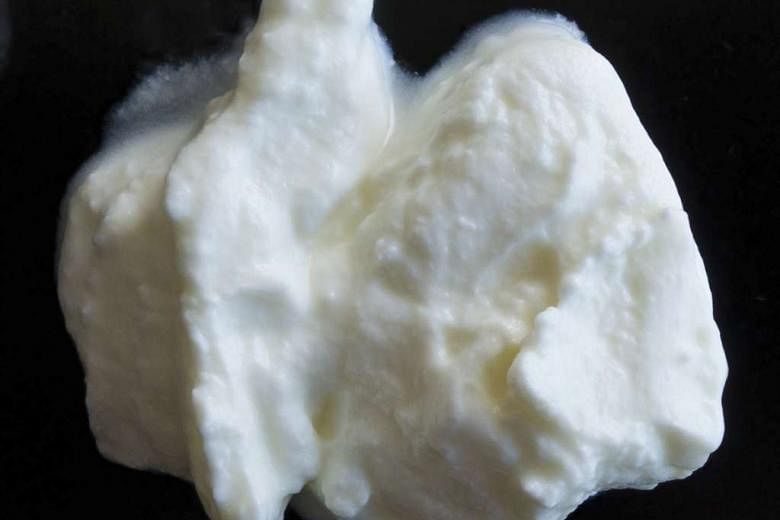Here is a guide to the main kinds of cultured milk products available here.
- Cultures: Fermented dairy items are soured by microbes that feed on sugars and produce lactic acid which thickens and/or curdles the dairy product. Supermarket products typically use up to three different bacteria strains. Traditionally cultivated cultures, which are stable and self-perpetuating, may contain "communities" of several microbe species. Shown here is a yogurt brand named for the Bulgarian lactobacillus strain it uses
- Fermenting at home: Making fermented dairy at home is simple. Mix milk or cream with a starter culture and hold it at a specific temperature until sufficiently soured. Precise temperature control and clean, sterile equipment are essential to promote the desired culture's growth and reduce risk of spoilage. Consult a good book, such as The Art Of Fermentation by Sandor Ellix Katz ($66.94 from www.kinokuniya.com.sg), for directions. Look for starter cultures, such as the freeze-dried yoghurt culture shown here, in health food stores.
- Fat content: A higher fat content translates into a creamier texture and increased stability in hot cooking. Low-fat, soured dairy products often mimic thicker, smoother, high-fat consistencies with the help of gums and thickeners.
- Yogurt: The flavour and texture depend on the microbes used, although the original quality and taste of the milk are still the dominant factors. Shown here is goat-milk yoghurt, with small fat globules that give it a velvety smoothness. Sheep-milk yogurt is thick and lush, thanks to a higher fat content than cow's milk.
- Greek yogurt: This is traditionally strained to remove some moisture, yielding thick yogurt suitable for dips and cold sauces. Modern commercial Greek or "Greek-style" yogurt may be strained - like the one shown here - or thickened with additives. In Indian cuisine, a dessert called shrikhand is made from very thick strained yoghurt.
- Sour cream: The generic English term for fermented cream. Different countries have different names for indigenous soured creams, with countless variations in flavour, acidity, texture and fat content. Examples include Mexican crema and Russian smetana.
- Creme fraiche: A French type of thick, spoonable sour cream. True creme fraiche has a fat content of about 30 per cent to more than 40 per cent, a buttery, almost floral flavour and a voluptuous, rich texture, distinctly different from yogurt. It can be used to thicken and enrich hot sauces as its high fat content prevents it from splitting when heated.
- Buttermilk: In the pre-refrigeration era, cream was skimmed off the top of raw milk to be churned into butter. It had typically soured slightly by the time enough had been collected for a churning session. Buttermilk, the protein-rich liquid drained off the churned butter, hence had a tangy taste. Modern commercial buttermilk, however, is cultured from pasteurised milk, though it tastes similarly sour. Like its predecessor, it is frequently used with baking soda to leaven baked goods. The spiced "buttermilk" drink served in local Indian restaurants is usually just diluted yoghurt.
- Kefir: A fermented milk drink, runny yet slightly viscous, mildly sour when young, quite tart and a tad fizzy if fermented for longer. It is traditionally and uniquely made and perpetuated with "grains" which form and grow in live kefir - clumps of milk protein bearing a symbiotic community of yeasts and bacteria. Look for kefir and kefir starters in health food stores.
- Quark: Soft, spreadable curd cheese made by heating soured milk to coagulate it, then straining off the whey. Variations on this theme are found across Europe and are usually mild and milky-tasting. Look for plain and flavoured quark in stores selling European groceries.
Text and photos: Chris Tan








